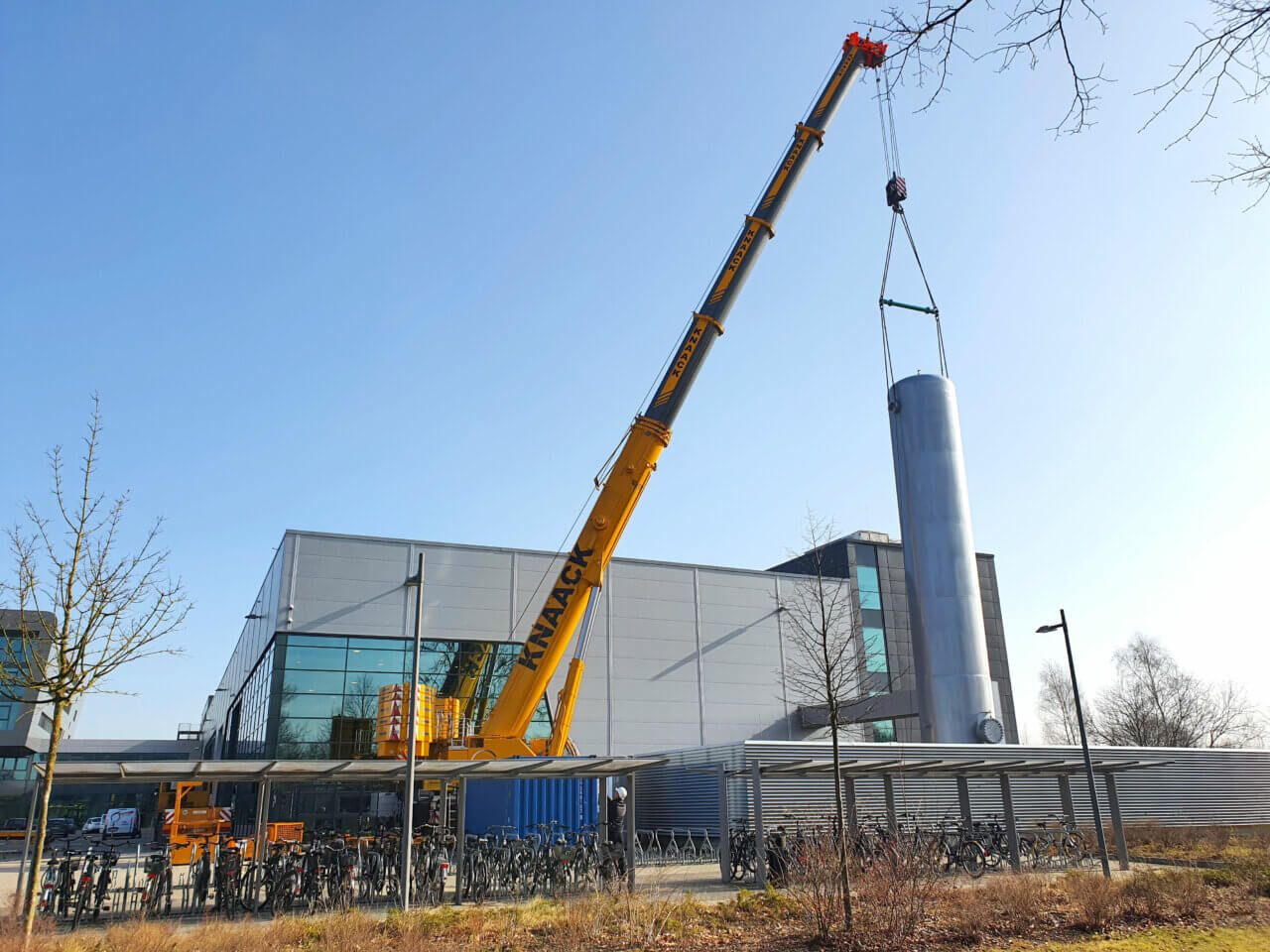The big question shaping the future of aviation is: How do we make aviation more sustainable? One way to achieve this, which Hamburg, as the world’s third-largest aviation location, has taken up, is hydrogen. This means moving away from fossil fuels and toward low-emission aircraft. An important step for Hamburg is the new hydrogen storage facility at ZAL. It paves the way for expanded tests for sustainable aircraft engines.
On March 3, 2021, a lot was going on at the ZAL parking lot. A heavy-duty crane and heavily loaded trucks caused quite a stir. But once the crane was installed and the tank secured inside, things moved very quickly: in just a few minutes, the tank was in place – and ZAL had a new landmark.
The new hydrogen tank
At around 20 meters, the tank is taller than the ZAL TechCenter itself. With its volume of 100 cubic meters at 45 bar, the tank holds around 300 kg of usable hydrogen. This is roughly ten times the amount of H2 compared to the previous solution with cylinder bundles at ZAL. With the available hydrogen from the tank, ZAL GmbH’s company vehicle (a Mercedes GLC F-Cell) could travel around 29,700 km. That is equivalent to the distance from Hamburg to Cape Town, South Africa – and back again.
The TÜV has already tested the tank. In the next 5 to 6 weeks, further installation work will be carried out. After that, ZAL will put the hydrogen storage tank into operation.
Running the tank
Hydrogen, however, is not a new research topic at ZAL, on the contrary. The previous supply of H2 was via so-called cylinder bundles. These are several gas cylinders connected to form a bundle, which had to be changed several times a week and were quite labor-intensive. Since the tank can store much more hydrogen than the cylinder bundles, a large part of the delivery traffic is eliminated: instead of three times a week, only every two weeks. Incidentally, the hydrogen comes from Stade. It is produced there as a side product of a manufacturing process that causes lower emissions and is, therefore, more environmentally friendly than hydrogen made from natural gas.
New test possibilities
The significantly larger quantity of hydrogen expands the possible test capacities at the research center. The tank provides ZAL with around 10-megawatt hours of hydrogen. For example, parallel test campaigns of different fuel cell systems or component tests with several 100 kilowatts of nominal power each over a longer period of time are possible without interruption.
The ZAL TechCenter offers its partners extended testing possibilities for their work on future hydrogen energy systems. In the laboratories and indoor areas at ZAL, researchers conduct tests on real aircraft structures and consequently optimize the integration of the hydrogen system in the structure: the basis for the low-emission flying of tomorrow.





